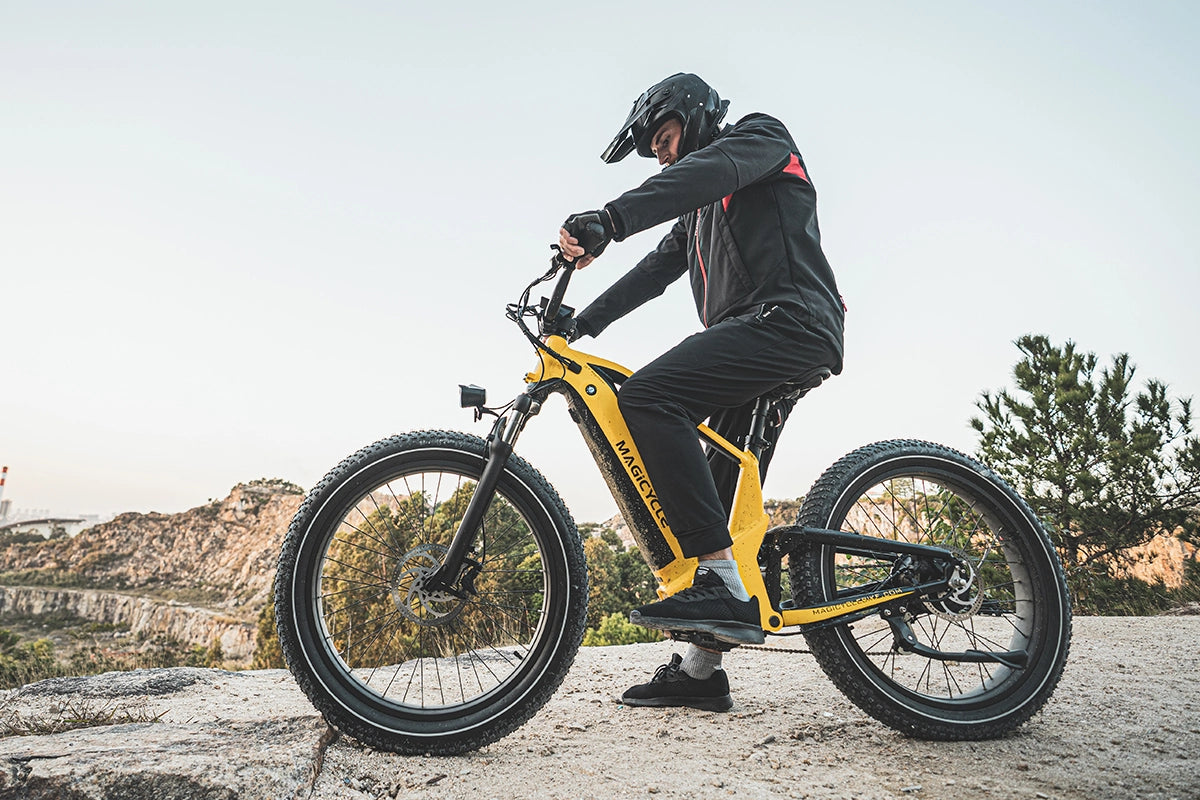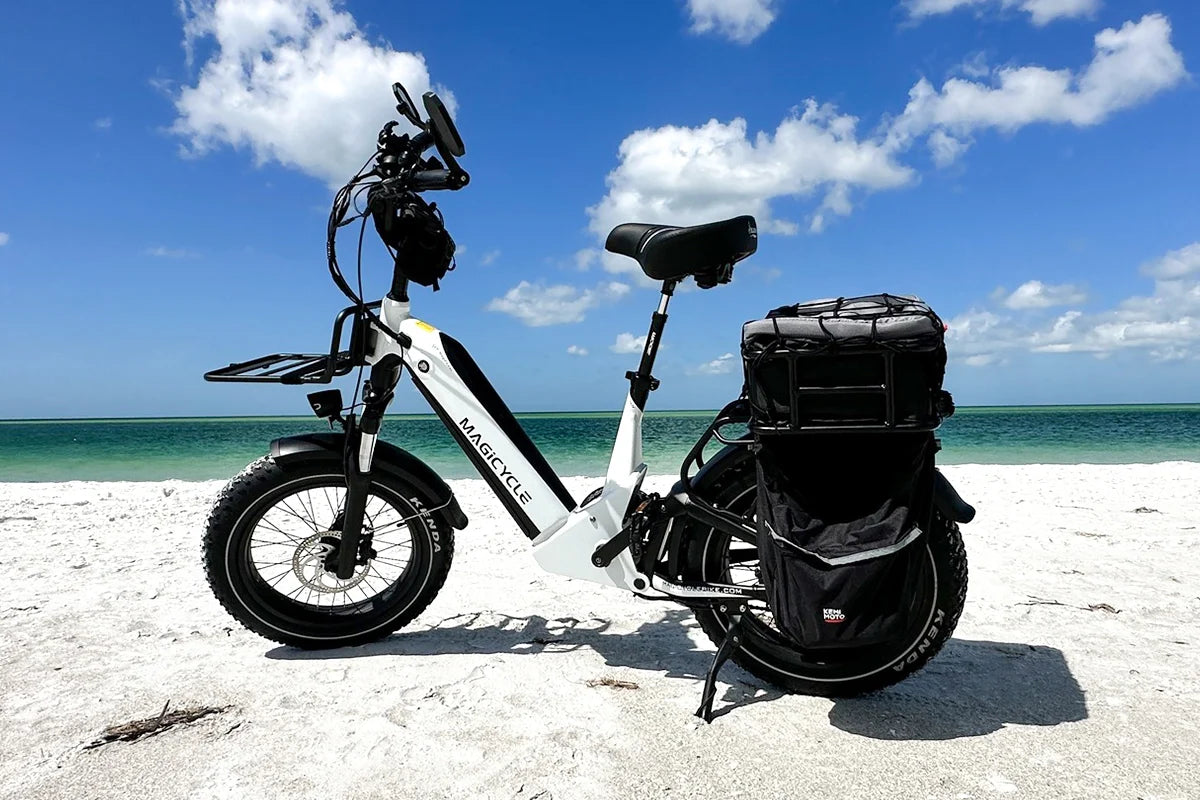Electric bikes (e-bikes) are transforming the cycling landscape, offering riders a unique blend of traditional biking and modern technology. With their ability to assist in pedaling, e-bikes make cycling more accessible and enjoyable for people of all skill levels. However, like any form of transportation, unexpected situations can arise while riding. This comprehensive guide will help you understand the basics of e-bikes, prepare for your journey, navigate traffic challenges, tackle weather-related issues, and overcome technical difficulties to ensure a safe and enjoyable ride.
Understanding E-bike Basics
What Sets E-bikes Apart
E-bikes are bicycles equipped with an electric motor that provides assistance while pedaling. This motor can significantly reduce the physical effort required to ride, making it easier to tackle hills and long distances. Unlike traditional bicycles, which rely solely on human power, e-bikes can reach higher speeds with less exertion, allowing riders to enjoy cycling without the same level of fatigue.E-bikes come in various styles, including commuter models, mountain bikes, and cargo bikes, catering to different riding preferences and environments. The key features that set e-bikes apart include pedal assist (where the motor engages based on your pedaling input) and throttle control (allowing you to engage the motor without pedaling).

Common E-bike Components
Understanding the components of an e-bike is essential for effective riding and maintenance. Here are some common parts:
- Motor: Typically located in the hub (front or rear) or at the crank (mid-drive), the motor provides assistance based on your pedaling.
- Battery: The battery powers the motor and is usually mounted on the frame. Battery capacity is measured in watt-hours (Wh), which affects range.
- Controller: This component manages power output from the battery to the motor, allowing you to choose different levels of assistance.
- Display: Most electric bikes have a display that shows speed, battery level, distance traveled, and assistance mode.
Preparing for Your E-bike Journey
Essential Safety Gear
Safety should always be a top priority when riding an e-bike. Essential safety gear includes:
- Helmet: A properly fitted helmet is crucial for protecting your head in case of an accident. Look for helmets certified by safety standards such as CPSC or EN 1078.
- Reflective Clothing: Wearing bright or reflective clothing increases visibility to motorists and other cyclists.
- Gloves: Cycling gloves provide grip on the handlebars and protect your hands from abrasions in case of a fall.
- Lights: Front and rear lights are essential for riding in low-light conditions or at night. Consider using flashing lights to increase visibility.
Pre-ride Checklist
Before hitting the road, conduct a thorough pre-ride inspection:
- Tires: Check for proper inflation (usually indicated on the sidewall) and inspect for any damage or wear.
- Brakes: Ensure brakes are functioning correctly by squeezing levers and checking for responsiveness.
- Battery: Confirm that the battery is fully charged and securely attached to the bike.
- Chain and Gears: Lubricate if necessary and ensure smooth operation by shifting through gears while stationary.
Navigating Traffic Challenges
Dealing with Aggressive Drivers
Aggressive drivers can pose significant risks to cyclists. Here are strategies for safely navigating these situations:
- Stay Alert: Always be aware of your surroundings and anticipate potential hazards.
- Use Hand Signals: Clearly indicate your intentions with hand signals when turning or changing lanes.
- Maintain a Safe Distance: Avoid riding too close to vehicles; give yourself space to react if necessary.
- Choose Safe Routes: Whenever possible, opt for bike lanes or quieter streets to minimize interactions with aggressive drivers.
Handling Busy Intersections
Intersections can be particularly dangerous for cyclists due to high traffic volumes. Here are tips for safely navigating them:
- Plan Your Route: Familiarize yourself with intersections before your ride; consider using apps that highlight bike-friendly routes.
- Position Yourself Wisely: Stay in designated bike lanes where available; if not, position yourself in a way that makes you visible to drivers.
- Follow Traffic Signals: Obey all traffic lights and signs; be prepared to stop even if you have the right of way.

Tackling Weather-related Issues
Riding in Unexpected Rain
Rain can create slippery conditions and reduce visibility while riding:
- Slow Down: Reduce speed to maintain control; wet roads can be treacherous.
- Avoid Puddles: Puddles may conceal hazards such as potholes or debris beneath the surface.
- Use Fenders: Installing fenders can help keep you dry and protect your bike’s components from water damage.
If you find yourself caught in unexpected rain:
- Seek Shelter if Possible: Look for nearby buildings or structures where you can wait out heavy rain.
- Check Visibility: Ensure your lights are functioning properly; consider using bright-colored clothing to increase visibility.
Combating Strong Winds
Strong winds can affect your balance and control while riding:
- Lean Into the Wind: Adjust your body position slightly into the wind to maintain stability.
- Choose Your Route Wisely: Opt for sheltered paths when possible; avoid open areas where wind gusts may be stronger.
If you encounter strong crosswinds:
- Adjust Your Speed: Slow down if necessary; maintaining control is more important than speed.
- Be Cautious with Turns: Wind can push you off course during turns; approach corners slowly.
Overcoming Technical Difficulties
Battery Depletion Mid-Ride
Running out of battery mid-ride can be frustrating but manageable:
- Plan Ahead: Always check your battery level before starting a long ride; consider carrying a portable charger if your bike supports it.
If you do find yourself low on battery:
- Pedal Without Assistance: E-bikes can still function as regular bicycles; use your own strength to continue riding until you reach a safe location.
- Locate Charging Stations: Familiarize yourself with local charging stations or cafes that may allow you to recharge while resting.
Sudden Motor Malfunctions
If you experience motor issues during your ride:
- Stay Calm: Pull over safely to assess the situation without panicking.
To troubleshoot:
- Check Connections: Ensure all electrical connections are secure; sometimes loose wires can cause malfunctions.
- Consult Your Manual: Refer to troubleshooting sections for guidance on common issues specific to your model.
Staying Safe in Low Visibility Conditions
Navigating Foggy Weather
Fog can drastically reduce visibility while riding:
- Use Lights: Ensure your front and rear lights are on; consider using high-intensity lights for better visibility in foggy conditions.
When riding in fog:
- Ride Slowly: Reduce speed significantly; this will give you more time to react if something appears suddenly.
- Stay Alert for Sounds: Listen closely for approaching vehicles or other cyclists since visibility is limited.
Night Riding Precautions
When riding at night, visibility becomes even more critical:
- Wear Reflective Gear: Increase visibility by wearing reflective clothing or accessories.
To enhance safety during night rides:
- Use High-quality Lights: Invest in bright headlights that illuminate your path effectively; rear lights should also be visible from a distance.
- Stick to Familiar Routes: Ride on well-lit paths that you know well; avoid unfamiliar areas where hazards may be hidden.
Conclusion
E-bike riding offers an exhilarating way to explore your surroundings while enjoying the benefits of electric assistance. However, being prepared for unexpected situations is crucial for ensuring a safe and enjoyable experience on two wheels.By understanding e-bike basics, preparing adequately for your journey, navigating traffic challenges, tackling weather-related issues, overcoming technical difficulties, and prioritizing safety in low visibility conditions, you can enhance your riding experience significantly.




